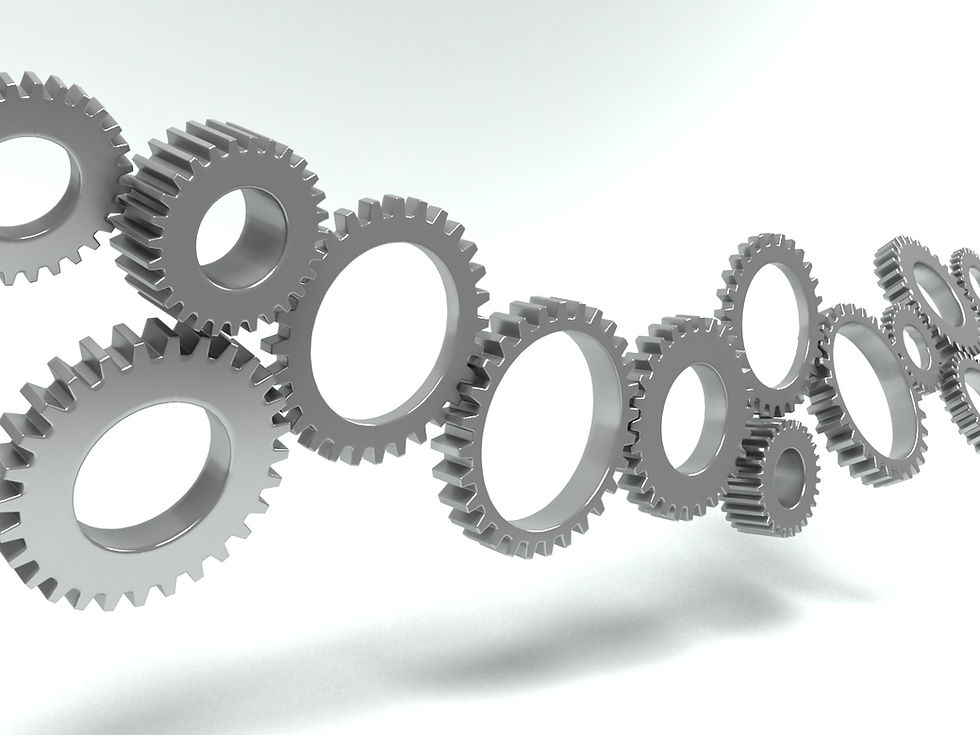What You’ve Built Is Valuable. But Can It Be Worth Exponentially More?
- Oct 15
- 5 min read
A well-designed flywheel turns day-to-day effort into a system that gains momentum and compounds results, month after month, year after year.
The result?
Compounding value.
(I know, sounds like something from an investment pitch.
But that’s exactly what we’re talking about: small win + small win + small win...
until something big happens.)
What’s a Flywheel?

Think of a potter’s wheel:
At first, it barely moves.
Push after push, it picks up speed.
And then, one day…
You’re no longer working for the wheel.
The wheel starts working for you.
Jim Collins calls it “the flywheel.”
I call it: a self-accelerating mechanism.
A system that, once in motion, drives the right things in the company,
without noise or magic tricks.
The essence?
Each turn makes the next one easier.
You’re not adding effort.
You’re adding momentum.
You’re adding direction. Speed. Inertia.
But beware:
A wrongly set flywheel doesn’t bring order.
It amplifies chaos.
The system accelerates whatever it catches...
the good stuff or the dysfunctions.
And instead of a virtuous loop,
You get a wagon with square wheels and the handbrake on.
“Sounds good.
But let’s just close the month first…”

You’ve heard that before.
Maybe even said it yourself.
There’s always something urgent.
Always another fire to put out.
And long-term structure keeps getting pushed aside.
The ideas?
They’re not the problem.
What’s missing is space.
Breathing room.
There’s always a fire to put out.
Always something “critical.”
And just like that, long-term building gets pushed aside.
Meanwhile, fear, haste, and ego walk into a boardroom...
and somehow never leave.
The instincts that once got you far...
now holding you back.
And that’s normal. Human. Understandable
But together, they block the very mechanism
that could accelerate everything.
The result? Friction.
The wheel jams right in the corner of
“that one thing only you know how to do.”
Real loops.
Engines that drive each other forward.
The flywheel is not a shortcut.
It’s a construction.
It’s the kind of mechanism that, if well built,
makes things work, align, and accelerate on their own.
I’ve worked with dozens of companies and investors to refine it.
It’s a system with clear steps and natural flow…
even though, in practice, many components are assembled in parallel.
To make it easy to grasp, here are a few examples:
Loops that appear in most companies that start running “on their own engine”:
Loop 1 – “Cheap Money”

A chain of interconnected links:
Transparency → Trust → Capital →
Talent → Performance → Reputation →
(back to) Trust
It all starts with transparency.
When it’s clear what you promise, how you make decisions, and what you deliver, trust is built.
When there’s trust, money flows more easily and at a lower cost.
With capital available, you can attract better people.
Great people, in a stable environment, deliver real performance.
Performance elevates the company’s reputation.
And a strong reputation builds even more trust.
From there, the loop restarts, stronger every time.
Loop 2 – “The Growth Engine”

The chain:
Rhythm → Clarity → Execution →
Results → Reputation → Opportunities →
Talent → (back to) Rhythm
It all starts with rhythm
a consistent framework of governance,
decisions, and priorities
that keeps the team aligned and grounded.
With rhythm comes clarity.
Everyone knows what matters, what’s coming next, and why.
Good execution delivers visible results.
Results boost reputation.
Reputation brings better opportunities and projects.
Good projects attract better talent.
And great talent, within a clear structure, drives even more rhythm.
That’s how acceleration starts and it’s no longer about luck,
but about process.
The takeaway?
This is where the true magic of the flywheel lies:
The flywheel doesn’t demand constant strokes of genius.
But it does require:
coherence, clarity, and rhythm.
“Nothing spectacular.”
Just effects that amplify.

At first, it just looks like order:
clearer meetings,
timely decisions,
stable processes.
Sometimes, it even feels like extra work.
But in the background, inertia is forming:
friction drops,
rhythm builds,
decisions flow,
people know what to do.
No fireworks.
No “wow moment.”
The paradox
The most important things don’t show up as a line on your quarterly P&L.
And yet, paradoxically, they’re what define the long-term health of your company.
There’s no line for “decision-making clarity.”
None for “how easily money comes in.”
No cell in Excel for “the cost of chaos,”
or for “missed opportunities” and “delayed decisions.”
And yet, they add up.
Month after month. Turn after turn.
And they show up where it truly matters:
In profit margins, when the right customers come in (not just the ones who want things fast and cheap),
In the cost of capital (when WACC drops—not because the bank got friendlier),
In customer recommendations (when NPS goes up—not by luck or because you gave them branded pens),
In the great people who come and choose to stay (without needing sushi at the office),
In the exit valuation (not applause at a conference),
In the final return (IRR) — higher, faster, or more significant (that rare moment when an investor says: “I’d bet on you again.”)
That’s when the investor says:
“This company has structure. Not just luck.”
And maybe even more important:
It helps you answer a tough question:
“Okay... so what does this company do when the founder’s no longer in the office?”
Cost is linear.
Value is exponential.

Today’s invoice will be paid.
But tomorrow’s value will remain.
When done right, strategic consulting becomes a catalyst for compounding value.
But to make a real difference, it needs:
Openness,
Discipline,
and a context ready to implement.
I work with teams that already have energy but want inertia.
We set the framework, make commitments measurable, and reduce friction.
Brick by brick.
We build a foundation that doesn’t just support the house...it holds the road ahead.
I don’t bring slide decks.
I bring rhythm.
The rest?
That’s the wheel’s job.
If you’re curious what your company’s flywheel could look like—let’s talk.
We’ll sketch yours on a single page.
Over coffee.







Comments